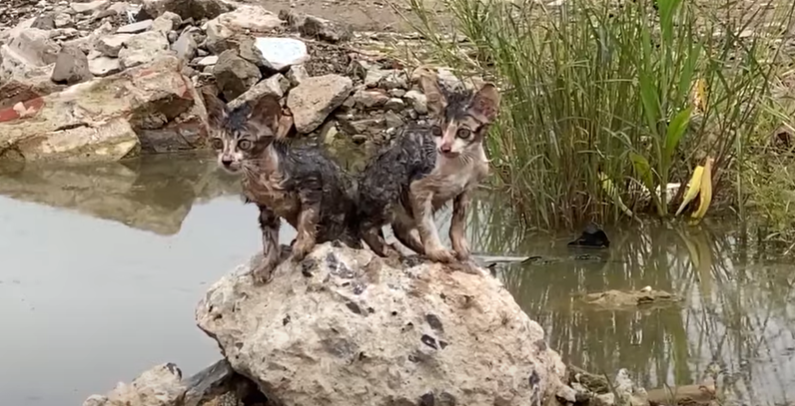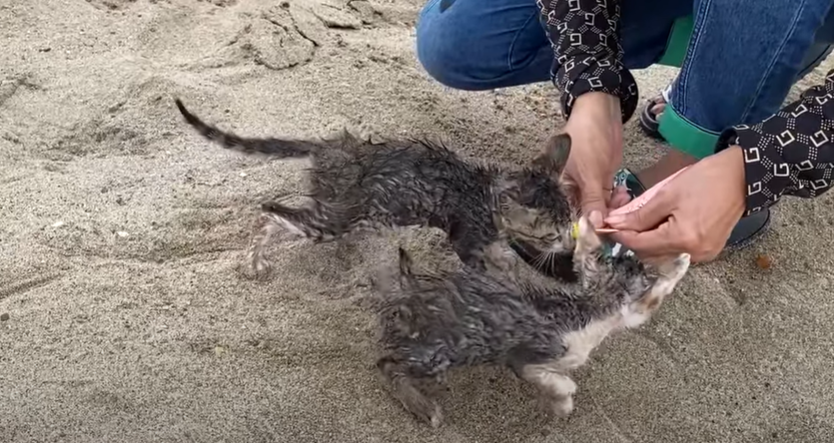
In the aftermath of relentless earthquakes and devastating landslides, amidst the debris and chaos, a lone figure emerged—a woman, weathered beyond her years, her eyes reflecting the anguish of losing everything she held dear. Her home, once a place of warmth and memories, had been reduced to rubble, its foundations shattered by the force of nature. Her belongings lay scattered around her like broken dreams, lost in the wake of disaster. She stood amidst the wreckage, cold and hungry, her spirit battered but not broken. In that moment, the weight of loss was overwhelming, yet she refused to give in.
Once a vibrant community, her neighborhood now lay in ruins, a desolate landscape where homes and lives had been torn apart. The streets, once filled with the sounds of laughter and daily life, were now silent, save for the distant rumblings of aftershocks. The woman’s heart ached as she walked through the devastation, searching for remnants of her life—perhaps a cherished photograph, a piece of clothing, or anything that could offer her solace amidst the overwhelming loss. Every corner she turned reminded her of what had been taken, yet she pressed on, determined to find something to hold onto.

Desperation etched deep lines on her face as she wandered through the makeshift shelters, pleading for help. The resources she so desperately needed—water, warmth, food—seemed as elusive as the hope that had once filled her life. Her voice, once strong and confident, now cracked with fatigue as she recounted the harrowing moments when the earth trembled and the mountains roared, shattering her world in an instant. The memories of those moments haunted her, but she knew she had to keep moving forward, if only to survive.
Amidst the chaos and despair, compassionate souls emerged—aid workers and volunteers who braved the aftershocks and the dangers of the environment to offer assistance. They distributed blankets, food, and water, their presence bringing a flicker of hope to the woman’s weary heart. In a world that had been reduced to rubble, these acts of kindness reminded her that, even in the darkest moments, humanity’s resilience and compassion shone brightest. The strangers who came to her aid became beacons of light in an otherwise bleak existence.
Days turned into nights as the woman clung to the hope of rebuilding her life. Each small act of kindness—a meal, a shared moment of comfort, a warm embrace from strangers-turned-caretakers—helped stitch together the frayed edges of her existence. The shelter, though temporary and inadequate for the scale of the devastation, became a sanctuary where human connection transcended language and circumstance. In this place of refuge, she began to heal, finding solace in the solidarity of those who refused to leave her behind.

Her story, shared across news channels and social media, soon captured the attention of people near and far. The images of the devastation, coupled with her strength and perseverance, galvanized support from all corners of the world. Donations poured in, both material and financial, to help rebuild homes and restore the sense of community that had been lost. What had started as an individual struggle for survival had now become a collective effort to rebuild and restore hope. The woman, once an anonymous figure in the chaos, became a symbol of resilience and the power of human compassion.
Though her journey ahead remained uncertain, one thing was clear—her spirit remained unbroken. The tragedy she had endured had tested her in unimaginable ways, but it had not defeated her. Each day, as she navigated the ruins of her former life, she carried with her the promise of a future built not on what had been lost, but on the strength of those who stood with her. Her story was a testament to the indomitable human spirit, a reminder that even in the face of adversity, there is always hope.






